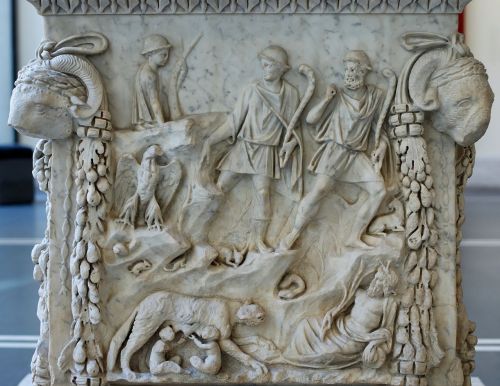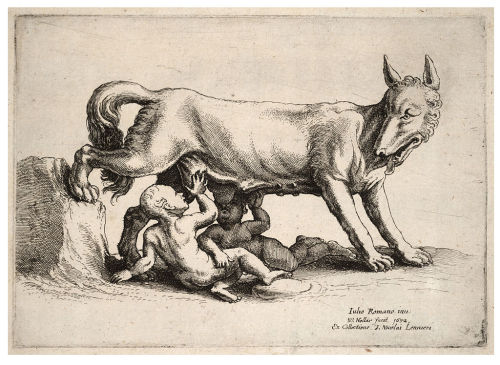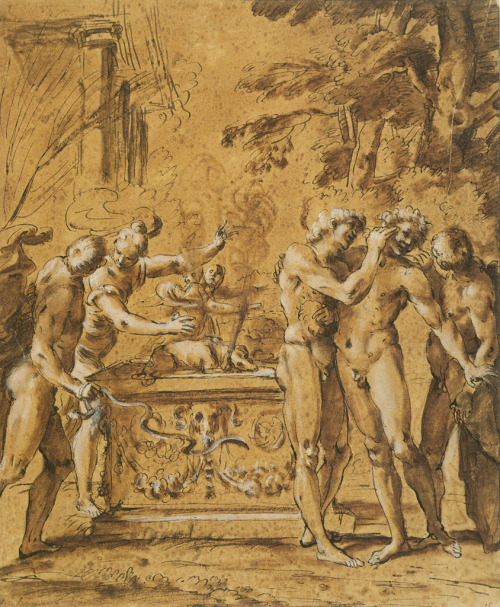#lupercalia


Imbolc grimoire page redo
PAGAN PILLS | San Valentino, il santo della cooperazione tra fedi diverse
PAGAN PILLS | San Valentino, il santo della cooperazione tra fedi diverse
Nel 496 E.C. papa Gelasio I elimina la festa romana della fertilità dei Lupercalia e la rimpiazza con quella di San Valentino, vescovo di Terni, martire e santo cristiano. La sua attribuzione agli innamorati sarebbe arrivata a posteriori. Già comunque all’inizio del Medioevo ci sono le prime associazioni della festa con l’amore. In realtà ci sono almeno due storie differenti sulla sua morte. La…

Happy Valentine’s for all the witches out here! *★*·.。
I send you my love today and hope that it is abundant in your life <3
This was a little postcard exclusive for Patreon, for valentine’s 2018, this year our patreons get to see the Lupercalia postcard plus more rewards ♡ ✧*。
Post link

Happy lupercalia all
The following BPAL offerings have had a good run, but as any goth will remind you: nothing lasts forever! Consider this your LAST CALL, everything linked here will vanish this Thursday, June 6th.
LUPERCALIA 2019 - We couldn’t be any prouder of these blends celebrating everything licentious, lascivious, and libidinous. Take one more scroll down memory lane, you may find yourself shocked by something you missed on the first pass.
HEXENNACHT - Our tribute to annual Night of the Witches revelries: “German fir and forest herbs, incense and bonfire smoke, broom straw, and the wet, glimmering scent of skin warmed by dance.”
LILITH’S WINTER TRAVELOGUE - A rare second set of Lilith perfumes, inspired by a wealth of wintry European vacation memories, both cheerful and somber, like this one: “Lilith surrounded by the ghosts of six million Parisians: damp black moss, grey sandalwood chips of bone, and winding sheets of balsam, ambergris, nagarmotha, and frankincense.”
VERNAL EQUINOX FULL MOON - The Solstice is almost upon us, which means it’s definitely time to relax our grip on springtime fancies and make way for new attractions. With a backup bottle, you can always return to that special time of year! Our blend: “Fossilized amber resin releasing a cascade of crocus and daffodil petals, glory-of-the-snow, graceful iris, radiant life everlasting, and a rainbow burst of tulip.”
DUETS - Our new collection of two-note perfumes will resurface occasionally with Lunacy releases, and then recede just as quickly. This is your last chance for these four blends:
Those looking for the origins of Valentine’s Day inevitably encounter the ancient Roman festival of Lupercalia. The Lupercalia festival is described in sometimes conflicting details by classical and Christian writers, so we have some idea of what went on at it, but there’s even more about it we don’t know. For example, we don’t know:
1. which god was celebrated,
2. exactly how/where the Lupercalia was celebrated, or
3. what its origins were.
Lupercalia is one of the most ancient of the Roman holidays (one of the feriae listed on ancient calendars from even before the time Julius Caesar reformed the calendar). It is familiar to us today for 2 main reasons:
1.It is associated with Valentine’s Day
2. It is the setting for Caesar’s refusal of the crown that was made immortal by Shakespeare, in his Julius Caesar. This is important in two ways: the association of Julius Caesar and the Lupercalia gives us some insight into the final months of Caesar’s life as well as a look at the Roman holiday.
The name of the Lupercalia was talked about a lot in the wake of the 2007 discovery of the legendary Lupercal cave – where, supposedly, the twins Romulus and Remus were suckled by a she-wolf.
read more here:
http://ancienthistory.about.com/od/socialcustomsdailylife/a/010908Lupercal.htm

Lupercalia offerings
Why February 13th is BRILLIANT
Running With Wolves
Today is the first day of the three day Roman festival of Lupercalia. It is a very ancient festival that dates back to the founding of Rome, some time around 753 BC. Possibly even further. It was pretty popular up until the end of the fifth century, when it was banned by the Pope. As that means it was celebrated for around 1200 years, it’s not so easy to get to the bottom of what it was all about. We don’t know which god, if any, they were honouring but we do know that the Romans really liked it. We also know that it involved lots of naked, drunk, oiled-up noblemen running around the city.
Back in the eighth century BC, February was the last month of the year, not the second. The calendar began in March, not January. So it seems likely that is was once a festival connected with the start of a new year. The Roman historian Plutarch, writing at the end of the first century, thought that the festival had its origins among shepherds and that it had probably had something to do with the Greek festival, Lykaia. The names of both festivals are related to the Roman and Greek words for ‘wolf’.
The celebrations began, in a private ceremony, in a cave beneath the Palatine Hill called the Lupercal. Traditionally, it was the place where infants Romulus and Remus, the founders of Rome, were found being suckled by a she-wolf. The Lupercalia began with a ritual performed by two groups of priests, collectively known as the Luperci, the brothers of the wolf. The Quinctilii, who were descended from the followers of Romulus and the Fabii, who were descended from the followers of Remus. They would sacrifice a goat, perhaps two goats, and maybe a dog as well. Two young men would be chosen, one from each priesthood, to represent the city’s founders. They would have their foreheads smeared with blood from the sacrificial knife. This would be immediately wiped off with sheep’s wool dipped in milk. The two men were then both expected to laugh loudly. It’s hard to say what this meant, but perhaps the blood represented death, as in the old year, and the milk, the birth of a new one.
After that, they would make a feast of their sacrifice accompanied by plenty of wine. If this was all there was to Lupercalia, it would be a pretty normal occasion. But it wasn’t. They then cut the skins of the animals into strips and fashioned themselves whips. Next, they took off all their clothes and, perhaps wearing masks, set off out into the city. They ran right around the walls of the Palatine, the hill in the centre of Rome where the city was traditionally founded. As they went, they used their strips of animal hide to whip the spectators. Specifically the women. To be whipped by one of the Luperci was thought to bring fertility or, to those who were already pregnant, easy childbirth.
The Luperci came from noble families. We know that in 44BC, Mark Anthony ran with them. He was part of a new group of priests introduced to the ceremony by Julius Caesar called the Julii. Clearly by creating a sect named after himself, he was equating himself with the founders of Rome. It didn’t go down to well, and a month later he was murdered. Cicero describes Mark Anthony as: “nudus, unctus, ebrius”, naked, oiled, drunk. Plutarch thought that the reason the participants were naked was to help them run faster, maybe the oil was supposed to help with that too.
By the fifth century, the celebrations had degraded somewhat. Nobility no longer took part. They left it to 'the rabble’. They must have still enjoyed the spectacle though, because the Senate really didn’t want to see it go. But the Pope told them that if they really wanted it, then they should take part and be prepared to run around naked themselves. It was outlawed in the 490s.
Many have suggested that our Valentine’s Day has its origins in the feast of Lupercalia. This is probably not the case. Some will tell you that part of the festival involved girls writing their names on strips of paper to be put in a vessel and drawn out by young men. That they would be paired off for the rest of the festival. This appears to have been made up by Alban Butler in 1756. It definitely has everything to do with wolves though. The Greek festival, Lykaia, which may be the origin of the Lupercalia, took place every nine years and involved human sacrifice. There was a feast where a single piece of human entrails was mixed up with those of an animal. Whoever ate it would be turned into a wolf by Zeus. If they could restrain themselves from eating human flesh before the next Lykaia, nine years later, they would become human again. If not, they would remain a wolf forever.
Post link
Happy 14th of Feb
#lupercalia (at Manchester, United Kingdom)
https://www.instagram.com/p/Bt2dz98g0cI/?utm_source=ig_tumblr_share&igshid=1hpozmcf72xmm
Post link
beatus lupercalia
the illustration is Mars, Venus and Amore by titian [tiziano vecellio], painted c.1550. for details of typesetting vide ‹risorgimento›.
Post link






![beatus lupercaliathe illustration is Mars, Venus and Amore by titian [tiziano vecellio], painted c.1 beatus lupercaliathe illustration is Mars, Venus and Amore by titian [tiziano vecellio], painted c.1](https://64.media.tumblr.com/36bb11481a95d2272190d9c0d390e1bf/a76cb2885be9520b-70/s500x750/40aa040b5c195e2dd4e4922590d87251a57aa845.png)
